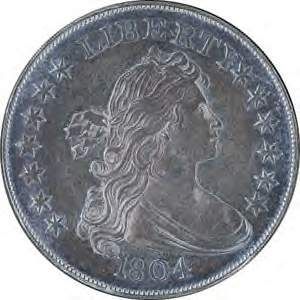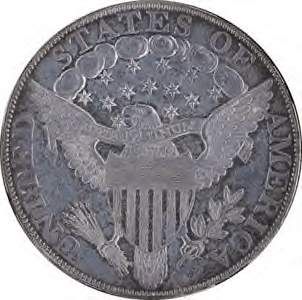Options
LGP
 MidLifeCrisis
Posts: 10,550 ✭✭✭✭✭
MidLifeCrisis
Posts: 10,550 ✭✭✭✭✭

LORIN GILBERT PARMELEE 1827-1905
Lorin Parmelee, a Vermont native, established himself in Boston in 1849 in the bean-baking business. The 1858 city directory lists him as a baker living at 7 E. Chester St. In 1860, he was at 46 Chester Park, with his bean-baking business, Parmelee & Newell (with Edison Newell), at the rear of the premises.
By the 1850s, Lorin began collecting large copper cents, which were being replaced in general circulation by small copper-nickel Flying Eagle cents (launched on May 25, 1857). And within the coming years Lorin became quite the coin collector, or numismatist. Day by day, Lorin's workers baked hundreds of pots of baked beans and delivered them to restaurants and hotels throughout the city, picking up empty pots to return. As his fortune grew, so did his coin collection.
Lorin continued to upgrade his collection and sell off his duplicates. He purchased the collections of George Seavey in 1873, J. Carson Brevoort (c.1876) and Charles Bushnell (c.1882). In 1883 his collection was valued at $60,000. He consigned coins (310 large cents) to the Strobridge sale of June 18-20, 1873. The Strobridge sale of Parmelee (Brevoort) on June 12, 1876 contained 170 of his large cents.
In early May of 1879, Ebenezer Locke Mason, Jr., long established Philadelphia dealer, visited Parmelee, noting in part:
“[Soon I reached] the King of all modern collectors, L.G. Parmelee; whose extraordinary and beautiful series of American coins made our heart ache with envy. Row after row of Uncirculated cents, dollars, etc., and colonials beyond our ability to describe, without losing our self-possession and calling all the coins diamonds of the first water. From Parmelee’s Palatial Palace, (erected on Boston’s nutritious edibles, (“B.B.” & “B.B.”) we hailed a Washington Street car [and went to Roxbury to see dealer W. Elliot Woodward].”
In the 1880s, the coin market was on fire -- a situation spawned by nationwide interest in all collectibles, a re-appreciation of American history thanks to the 1876 centennial, and, in numismatics, the sensation caused by the 1883 Liberty Head nickel erroneously made without the word "cents" on the reverse. One of his most notable pieces was the 1804 "Parmelee Dollar."
In 1890, he decided to liquidate his coins, his main collection consigned to the New York Coin & Stamp Co., operated by David U. Proskey and Harlan P. Smith. His collection was offered for sale by New York Coin and Stamp on June 25-27, 1890 and contained 145 large cents. But by this time, the market was tired. Lorin reviewed the bids at the sale and refused to let many of his scarce and rare pieces go. Although publicity suggested that just about everything sold, such was not the case, and for several years afterward he sold rarities here and there as he found buyers.
Among those who did buy at the Parmelee sale was William H. Woodin, who had his eye on many fine early $5 gold half eagles. However, unbeknown to Woodin at the time, cataloguer Harlan P. Smith also coveted many of the same coins, and Woodin was left in the dust (but did take home some nice pieces).
One interesting story related to the 1890 sale relates the following:
"As described in Carl Carlson's superb November 1978 Numismatist article entitled "Strawberry Leaves and Shiners," the ANS example of the NC-3 was the root of a physical struggle between two of the most respected dealers of their era: Ed Frossard and Lyman Low. When the Merritt-Haines-ANS specimen was presented for public sale in December 1894 as part of Frossard's 130th auction, for some reason Lyman Low called Frossard a "liar," though what he lied about is not recorded. Two later recollections of the scene have survived and both describe how Frossard and Low ended up rolling around on the floor until pulled apart by Harlan P. Smith, who lost a diamond stick pin in the fracas. A.G. Heaton noted the "two numismatic sages were soon mixed up on a dusty floor in a manner that would have made football adversaries envious of their combative qualities until, in a badly circulated condition, they were dragged apart by dismayed spectators." Charles Steigerwalt, who sold the piece...to Dr. Thomas Hall after the Parmelee sale, noted in a 1911 piece that the Parmelee specimen "described as 'good' was really 'fine' and the best known" and went on in the sale article to state that Frossard and Low "rolled around on the floor of the auction room, trying to kick each other."
The details of the last years of Lorin's life aren't known. In 1900, he was still in Boston, at 663 Massachusetts Ave. He died a few years later at the Danvers (Massachusetts) Insane Hospital of broncho-pneumonia.


1804 'PARMELEE DOLLAR'
Today there are still rare coins that are referred to as being part of Lorin's collection, such as the 1804 Parmelee Dollar. Only eight Class I specimens are known to exist.
An unknown woman supposedly purchased Lorin's from the U.S. Mint for face value during the Polk administration, 1845-49. It was part of Lorin's collection from 1874-90. Byron Reed of Omaha, Neb., purchased in from the Lorin's 1890 sale. It was held in the Omaha Public Library collection from 1891 until the 1980s when it was transferred to the Western Heritage Museum of Omaha.


ANOTHER PARMELEE COIN
The coin pictured above is my 1783 Nova Constellatio Copper, Blunt Rays MS62 Brown PCGS. Crosby 3-C, R.3. A beautiful chocolate-brown piece with satin luster and problem-free surfaces. Ex: Lorin G. Parmelee Collection (New York Coin & Stamp Co., 6/1890), first of two in lot 586.
It's a coin I'm proud to own and one that provides a direct link to an interesting time in numismatic history.
Sources:
Numismatic Hooligans...Fact or Fiction?
Parmelee Auction Fist Fight
An Appreciation of Lorin G. Parmelee
Parmelee Biography
The Family Parmelee
0
Comments
or